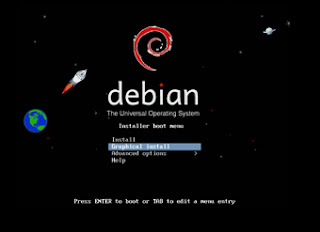
#DEBIAN 9 UPGRADE#
Once the system has rebooted, verify the upgrade by cat-ing the release file. Once the minimal basic upgrade completes, now run ```sudo apt full-upgrade``` to run a full system upgrade. When prompted to review changes, scroll down and hit ```q```. Hit ```yes``` or ```keep the local version currently installed``` to the package configuration, fullscreen prompts. Depending on your system, this step may take a while.

Once completed, run a minimal system upgrade ```sudo apt upgrade```.
#DEBIAN 9 UPDATE#
Now run ```sudo apt update``` to update the repositories. If you’re upgrading to Debian 11, use ```Bullseye```. Since we’re rocking Debian 9, the configuration file uses ```Stretch```. Use your favorite text editor to modify the ```/etc/apt/sources.list``` file. Then let's update the current system utilizing the existing repositories. PRETTY_NAME="Debian GNU/Linux 10 (buster)"Ĭongratulations! You have successfully upgraded your Debian system to a newer distribution.īefore doing so, always backup your Linode! See () for help with this.įirst, let's check what release your system is currently rocking. The output should display Buster or Bullseye and the associated version. Once the minimal basic upgrade completes, now run sudo apt full-upgrade to run a full system upgrade. When prompted to review changes, scroll down and hit q. Hit yes or keep the local version currently installed to the package configuration, fullscreen prompts. Once completed, run a minimal system upgrade sudo apt upgrade. Now run sudo apt update to update the repositories. Save, or write out, the updated file and return to the command line. # buster-updates, previously known as 'volatile' # stretch-updates, previously known as 'volatile'

If you’re upgrading to Debian 11, use Bullseye. Since we’re rocking Debian 9, the configuration file uses Stretch. Use your favorite text editor to modify the /etc/apt/sources.list file.

Now we can upgrade to the newest release! Keep in mind, if you're logged in as root, you don’t need to use sudo.Īt this point, you have an up-to-date system on the current Debian release. This will also work for Debian 11 (Bullseye).īefore doing so, always backup your Linode! See Backing Up Your Data for help with this.įirst, let's check what release your system is currently rocking. In this example, I will upgrade a Debian 9 (Stretch) Linode to Debian 10 (Buster). Please share your feedback in the comments section below.The following steps will allow you to upgrade your Debian version. If you find Debian Stable too outdated, you can also consider installing Debian Testing and receive more up-to-date software. If you installed Debian with XFCE desktop, you can also configure it to look more modern and beautiful. Debian is not well configured by default, so I usually also do a number of things after the installation to improve it.
#DEBIAN 9 INSTALL#
Graphics Cardįollowing Debian 9 install guide, you should now have a fully functional Debian 9 Stretch.
#DEBIAN 9 HOW TO#
However, for your convenience I want to provide you links to Debian wiki pages on how to install nVidia, AMD Graphic card, and WiFi drivers. So, I cannot demonstrate how to install proprietary drivers. Debian 9 Installation Guide: Update Repositories Proprietary driversĪt the time of creating this tutorial, I don’t have a dedicated graphics card or a WiFi card.


 0 kommentar(er)
0 kommentar(er)
